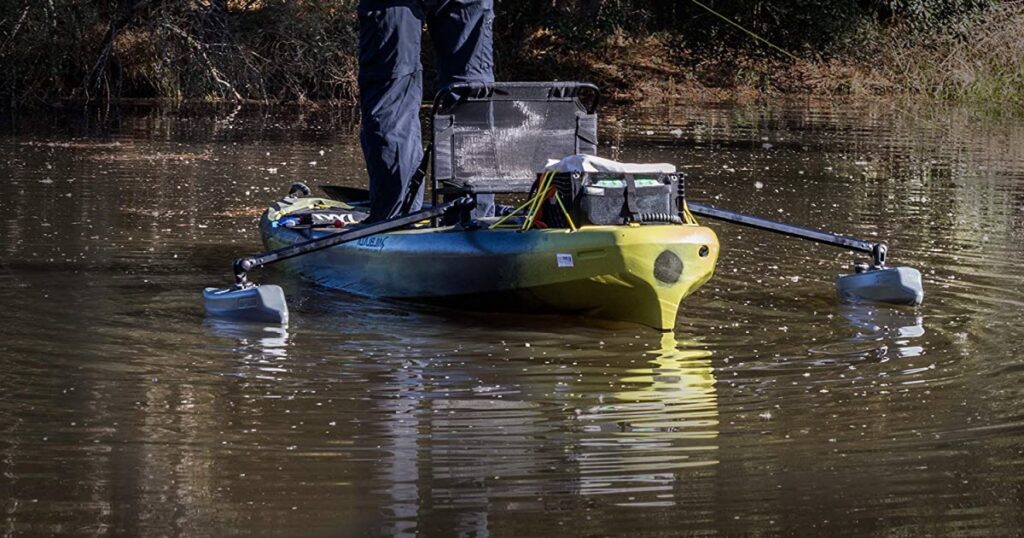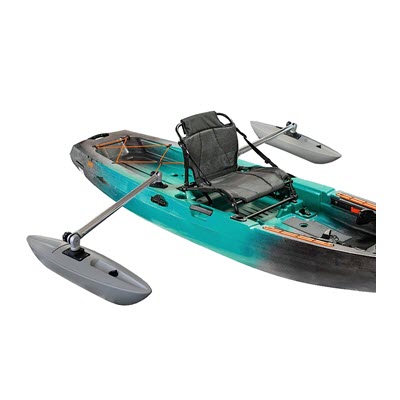Kayaking‘s popularity has exploded over the last few years. As someone who was introduced to kayaking at a young age, I can easily understand why. I love to explore new waterways in my yak, and also regularly use it for solo fishing adventures. I can tell you that the stability of your kayak is one of the most important considerations when fishing, especially if you want to stand and cast. Keep reading to find out my answer to the question do kayak outriggers work, as well as other essential information (including the product I use and recommend for both canoe and kayak stability).
You’ll sometimes also hear kayak outriggers referred to as floatation arms. We all know about how outriggers are supposed to make kayakers more stable, but do they really work? Are they worth the hassle? Do they make kayaks more difficult to paddle?
Let’s learn about what kayak outriggers are, how they work, and the pros and cons of installing them on your kayak.
What are Kayak Outriggers?
Kayak outriggers, or kayak stabilizers, are floatation devices you can attach to the hull of your kayak. They usually come in pairs, to go on both sides of your kayak.
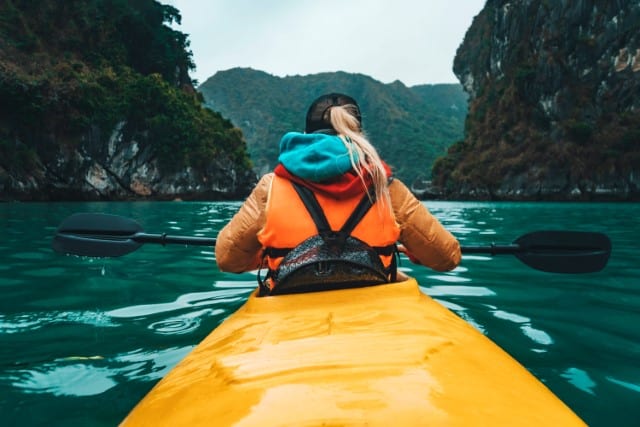
You can also mount just one or a series of floats, though, depending on your needs. Stabilizers are installed on either side of the kayak to increase balance and stability.
It is best to fix them near the rear of your kayak, so they will not interfere while you’re paddling. Many modern designs are adjustable, with the ability to raise and lower the arms depending on use.
You can find kayak outriggers at your local hobbies store, or you can make a DIY version. Kayak outriggers are available online, as well.
Which Outrigger Should You Buy?
There are several different kinds of outriggers on the market.
One particularly good outrigger is this kit from Brocraft that is available on Amazon. It’s made from PVC and includes stainless steel mounting hardware.
It’s more resistant to wear and tear than many other options. That’s invaluable if you’re paddling in rough waters or rocky areas.
Inflatable kayak outriggers like this one are a decent alternative if storage is limited, or you’re on a tight budget. While these outriggers are cheaper, they’re a lot less durable than the Brocraft kit, and I encourage you to go for quality and durability if it’s in your budget to do so.
One disadvantage of inflatable outriggers is how they can get punctured and damaged. There’s no easy way to repair them, and I personally find them to be more trouble than they’re worth.
Why Do You Need a Kayak Outrigger?
An outrigger adds stability to your kayak.
The outrigger has stabilizer floats that extend the width of your kayak and increase your watercraft’s buoyancy. Here are the other advantages of using kayak outriggers.
They are Helpful for Novice Paddlers
If you’re a first-time paddler, maintaining your balance and keeping your kayak stable on the water is a huge challenge.
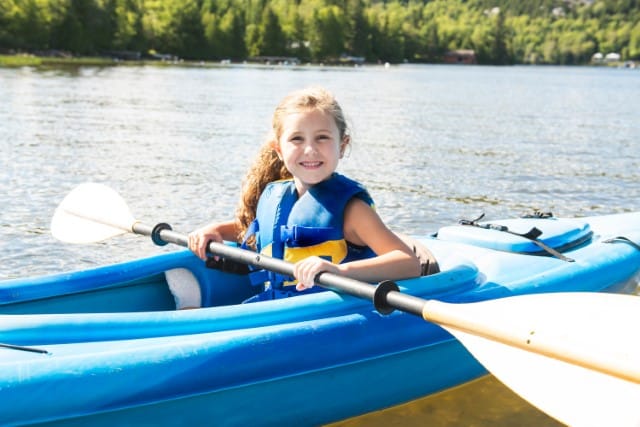
Kayak stabilizers come in handy since outriggers improve the kayak’s stability. They help in easing your fears about the kayak tipping over.
Outriggers also help people with balancing problems or limited mobility due to medical conditions kayak safely. Not only do outriggers increase balance and stability, but they make boarding and exiting the kayak a safer and steadier experience.
They May Also be Used for Canoes
Kayak outriggers are versatile and attach to the gunwales of your canoe. Canoes can be tippy and unstable, too, especially if you’re paddling for miles or if squalls or rip tides surprise you out in the open water.
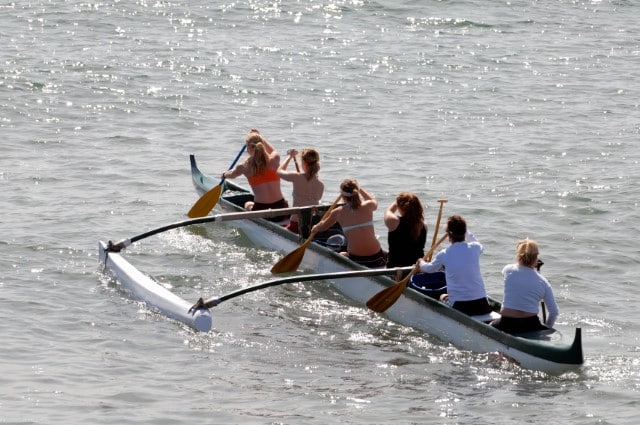
Attaching stabilizers transforms your canoe into a more stable watercraft and provides the extra blanket of security and peace of mind on your adventures.
They are Useful for Stand-Up Fishing
Are you planning to fish from your kayak? You’ll definitely want an outrigger.
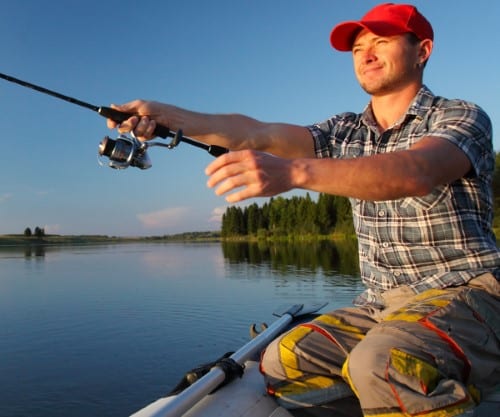
It’s hard to keep your balance in a kayak when you’re stand-up fishing. That’s where an outrigger comes in.
After all, it’s difficult to focus on balancing your kayak when you’re preoccupied with casting your fishing rod, changing lures, or reeling in a catch.
Kayak stabilizers provide the needed steadiness to keep you aboard your kayak in case there is an unexpected bump or you shift positions.
I especially recommend them for tandem fishing kayaks. With two people casting and landing fish, you double your chances of making a mistake and capsizing, so the extra stability can really come in handy in this case.
What are the Drawbacks?
There is just one major drawback of using an outrigger, and that is how it will slow down your kayak.
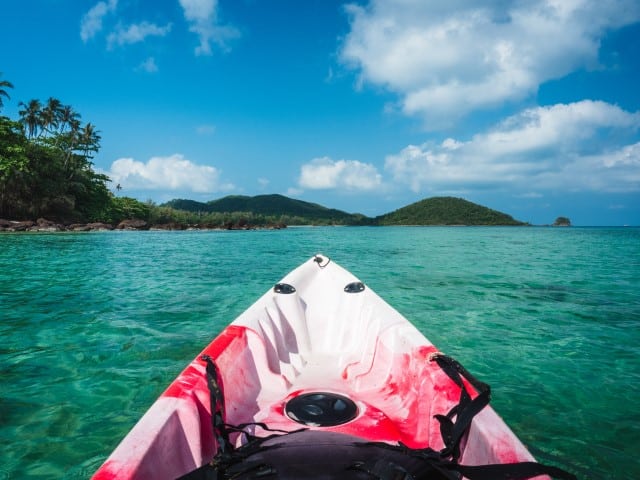
But if you prioritize stability over speed, or you use a motor to power your fishing kayak, then an outrigger is a great addition to your watercraft.
This is true even for lightweight outriggers. Their width and weight will make your watercraft move more slowly through the water.
So, Do Outriggers Work? (and are they worth it?)
You’ve learned about what outriggers are, why you’d want an outrigger on your kayak, and whether outriggers have any disadvantages.
So, do kayak outriggers work? The simple answer is yes.
Kayak outriggers provide stability, safety, and security while you’re paddling out in the water. Whether or not you use them depends on your needs and your paddling skills.
Personally, I use an outrigger when I fish from my kayak. I highly recommend using one if you’re a kayak angler.
Image credit: The featured image on this post was courtesy of Brocraft

